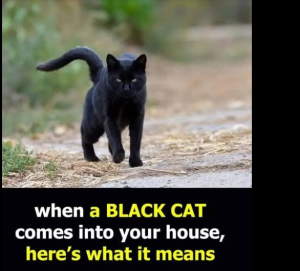The cat is one of the odd, beloved, and enigmatic animals in human history. For centuries people have been captivated by its grace, as well as its independence and the apparently mysterious appearance it possesses. Cats are more than pets: They have been integral to most cultures as holy ones revered as sacred beings but also feared as omens of misfortune. Black cats among all feline varieties have perhaps endured more complex legacy as they have been the most unfairly burdened with myths and superstitions still prevailing today.
Sleek coats, piercing eyes and a skittering chase up a tree around midnight are all reasons why black cats have been loved some places, feared in others and generally feared across the board. Both ancient Egypt and cats were venerated, not to mention that black cats in Egypt were associated protection, fertility and divine power. Bastet, often pictured as a lioness or domestic cat, symbolized home, femininity and protection, and black cats could be kept as guardians in her name.

It was, however, a dark turn in medieval Europe. But as the continent grew fearful and more and more associated it with the fear of witchcraft and the occult, blame fell on black cats. Witches were thought to be able to transform into black cats, or even use them as familiars, or supernaturally aided creatures who worked for them. This proved to be an association that led to the persecution of both the women who were accused of such witchcraft as well as their feline companions. You will never forget the persistent superstition that if you encounter a black cat, you are going to have misfortune. People would then stand and wait for a black cat to retrace its steps or it’s path so as to avoid crossing it’s path. This belief may in fact be logically unfounded, yet it became ingrained in the people’s folklore and can be traced down to popular culture to this very day.
Though we have made gleaming advances in science and knowledge, black cats remain victims of the relics of these old superstitions. Regardless of location, black cats are commonly adopted at lower rates than their lighter colored counterparts in shelters around the world. Still, some potential adopters unconsciously link them with bad luck, others simply do not find them as photogenic in an era of social media aesthetics. Well, this ‘black cat bias’ has very real consequences. In addition, many black cats remain in shelters longer and some never do get adopted. Their beauty is overlooked, while the myth of misfortune continues enveloping the gentle, playful and most importantly loyal personality.
When these outdated beliefs are the situation, however, fortunately there are efforts to counteract them. Theme campaigns featuring black cat adoptions, like “Black Cat Appreciation Day,” are numerous at most of the animal shelters promoting this love and companionship. Additionally, educators and animal welfare organizations are also addressing superstitions that add to the black cat’s reputation of being aloof, antisocial and not deserving of love; and proving the truth: black cats are just as affectionate, friendly, and deserving of love as any other cat. There are some cultures in which black cats are lucky symbols. For instance, they are thought to bring prosperity and protection in Japan and Scotland, among other places. Once sailors kept black cats aboard in order to bring good luck, safe travels. The opposing beliefs bring back to us that superstitions are basically culturally constructed, and hence changeable.
Black cats may be far from omens of doom, constantly classy, sharp as buttons, and equally as cuddly. In combination with their glossy coats and mysterious eyes, they’re striking companions and they’ll be loyal to you as much as you will to them. If you ignore the myths, adopting a black cat will be a rewarding experience in its own right. The time has come to re-frame the story around black cats. They are not relics of bad luck—they are living creatures who are owed love, car and admiration. Reading, educating, and helping others learn, will break down this stigma to give every cat, of any color, a chance at finding a loving home.
